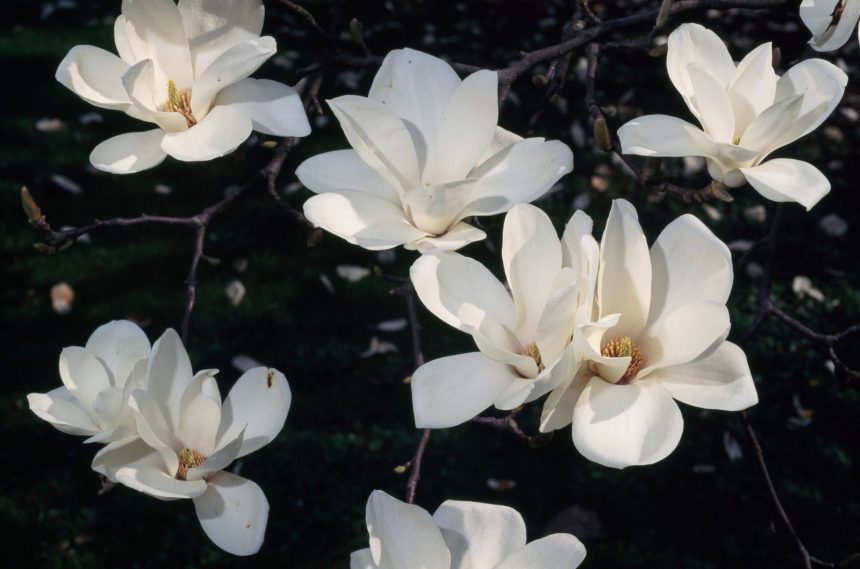Adorned with luxurious, flamboyant flowers that can be a handful or more in size, magnolia is the most stunning of flowering trees and takes centre stage in spring.
Named after the French botanist Pierre Magnol, the Magnolia genus comprises over 200 species of trees and shrubs from temperate, subtropical, and tropical regions of Asia and the Americas. Unsurprisingly, their hardiness varies. Many are deciduous; a few are evergreen. Some are small enough for a pot; others are gorgeous monsters that scale 30 metres.
You would have to be a dinosaur to be able to sniff the fragrant flowers blooming on the high branches of the taller species, and fossil records indicate that – once upon a time – that might have been a common sight. Modern-day magnolias have evolved from ancestral plants in the Magnoliaceae family that flowered 95 million years ago during the Cretaceous period, when dinosaurs roamed the earth. At that time, bees didn’t exist, so magnolias are pollinated by beetles. Many of today’s magnolias are ancient, including M. acuminata, which grew 20 million years ago and has been used to breed fabulous yellow-flowered hybrids.
In the UK, the magnolia most of us are most familiar with is M. x soulangeana, which blooms in urban gardens in spring. The only tree able to steal the show from the flowering cherries, it can stop you in your tracks. From a distance, the beautiful flowers resemble pink paper lanterns upon the bare branches. Up close, they are silky goblets that can be 8 to 30 centimetres wide.
M. x soulangeana arrived in England in 1827, having been raised in France around 1820. The man responsible was Étienne Soulange-Bodin, who had been a decorated soldier under Napoleon. After Napoleon’s exile, Soulange-Bodin established a botanic garden and arboretum at the Château de Fromont, on the outskirts of Paris. Amongst the impressive collection he had amassed from around the world were two glorious magnolias from China: the purple lily-flowered mulan (M. liliiflora) and the graceful white-flowered yulan (M. denudata). Yulan was held in such high esteem in ancient China that it was only allowed to be grown or gifted by the emperor and cultivated in temple gardens. Soulange-Bodin crossed mulan and yulan to produce M. x soulangeana. In 1827, this beautiful tree was immortalised in paint by the botanical artist Pierre-Joseph Redouté and soon heralded here; nearly two centuries later, we are still in love with it.
What is the best type of magnolia tree?
The vast range of magnolias on offer can feel overwhelming. Narrow down the choice by considering what suits your garden conditions. First, think about frost. If you live in a warmer area, such as Cornwall, you could grow the dreamy M. campbellii, which gets going in February or March, producing huge cup-and-saucer flowers. In the wider south or urban areas, M. x soulangeana and other forms that flower in April should fare well. But in colder regions, avoid the heartache of Jack Frost ruining the flowers by opting for one that blooms late, such as primrose ‘Yellow Fever’. The evergreen magnolias should also be avoided in very chilly regions.
Bear soil pH in mind. Most magnolias like a slightly acid soil, but some cope with neutral and alkaline soils, including powder-pink M. x loebneri ‘Leonard Messel’, starry white M. stellata, exotic-looking M. sieboldii ‘Colossus’, and the wonderful yellow-flowered forms (such as ‘Lemon Star’). M. grandiflora varieties – including ‘Kay Parris’ – are great for coping with tricky soil conditions, from wet ground to dry, alkaline soil.






